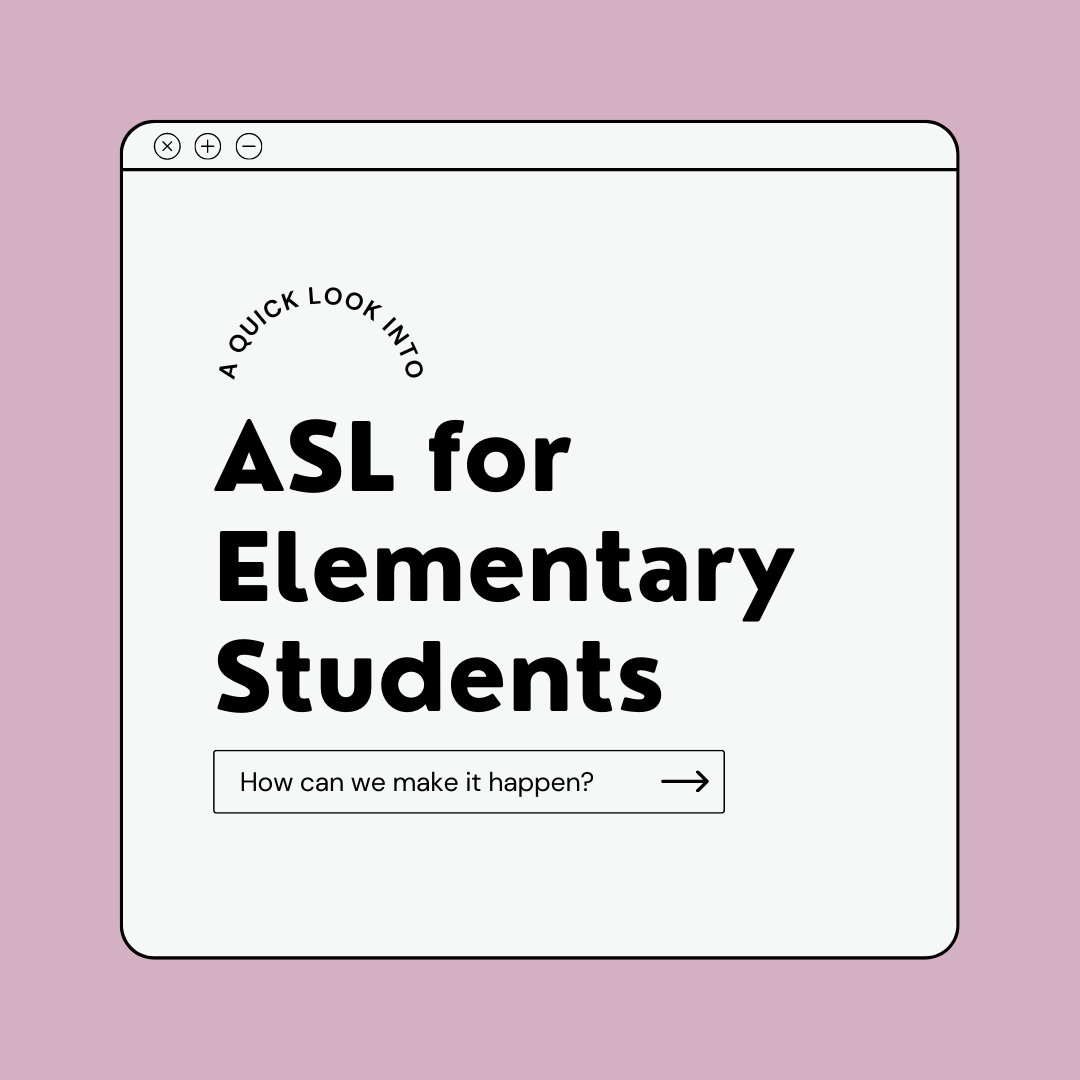Inspiration for ASL in the Classroom
A Quick Update
This week I really wanted to focus on ASL communication skills. Although I do feel like I am learning, I want to make sure I am preparing myself for words and phrases that might come up in an actual conversation. I decided I wanted to dedicate my time this week to practicing and memorizing parts of a conversation.
Reflecting on my progress this week, I do see some slight errors in the way that I sign certain words and phrases. During my research have learned the importance of facial expressions and body language while signing, and I realize this is something I will have to make sure I pay attention to as I continue with my learning journey. Ensuring I am using the correct movements while signing will help me communicate clearly hopefully without causing too much confusion. As stated in an article about the benefits of kids learning ASL, “when you furrow your brоwѕ, tilt your hеаd, look in a particular direction, оr orient your body in a number of other ways, уоu аrе adding оr changing mеаning in ASL” (“Sign Language for Kids”, n.d.).
ASL in the Classroom
I’m getting more excited as I continue to learn; I have already acquired so many little tricks that I can use in my classroom one day. One thing I know I would like to implement in my future classroom is teaching the alphabet to students using both spoken language and sign language. I think teaching the alphabet in both spoken and sign lanuage will help students get a firmer grasp on the letters, as they would have a physical representation of each letter to refer to. This also could serve as an inspiration for students to further pursue ASL! I would also like to make the regular use of sign language something of a class ritual. I would make a habit of greeting my class “good morning!” and “good bye!” in ASL everyday, as well as encourage my students to accompany their phrases such as “please” and “thank you” with the appropriate sign language.
The more I learn about American Sign Language, the more I see the value in teaching it to children. ASL can be incorporated into every single school subject, VERY easily might I add. Making this slight modification to the way we teach children can benefit the way students learn and communicate in many different ways. In addition to providing students with a physical representation of letters, words, and phrases, normalizing the use of sign language in the classroom will promote diversity and help to address accessibility issues in the classroom. It can also serve as a conversation starter with students, teaching them that everyone in the class is equal, regardless of ability/disability, and everyone deserves to speak and be heard.
ASL Kids, (n.d.), Sign Language for Kids, https://asl-kids.com/sign-language-for-kids/


